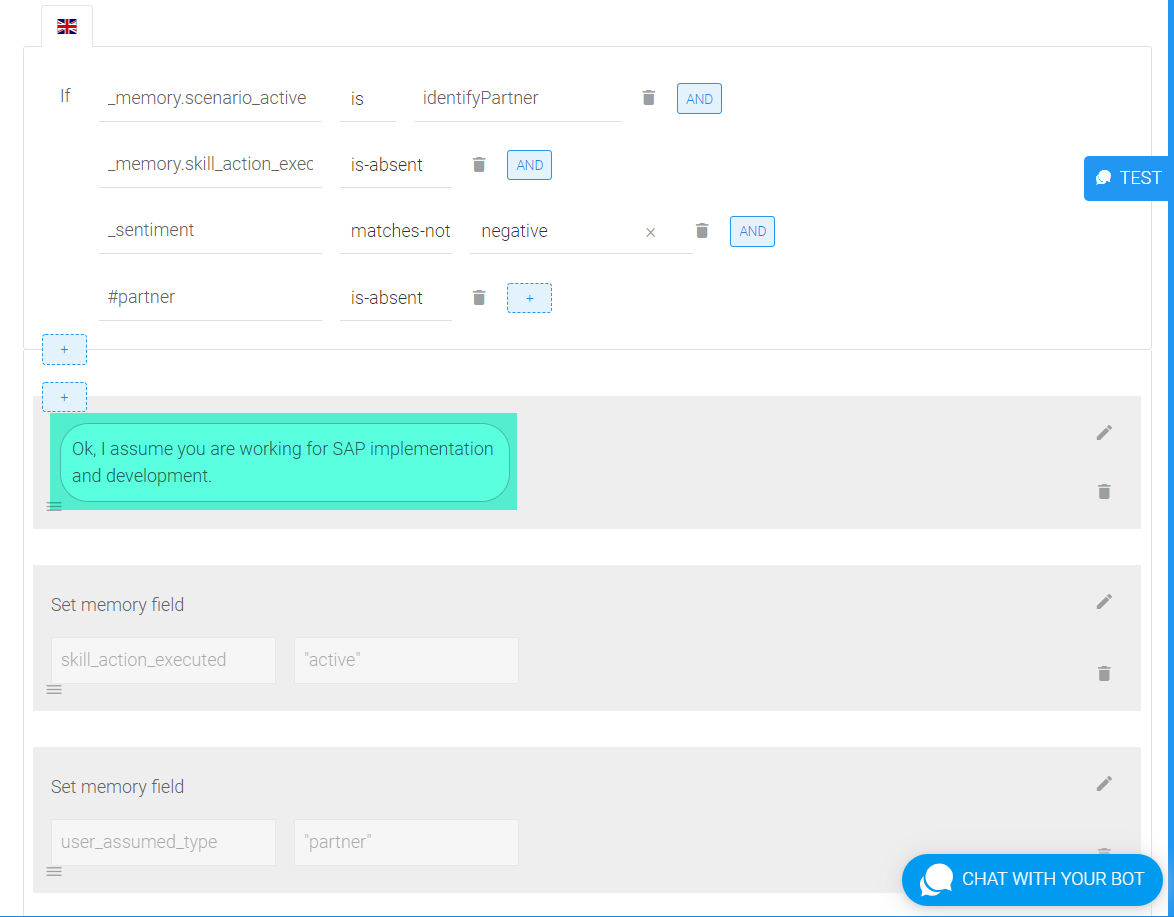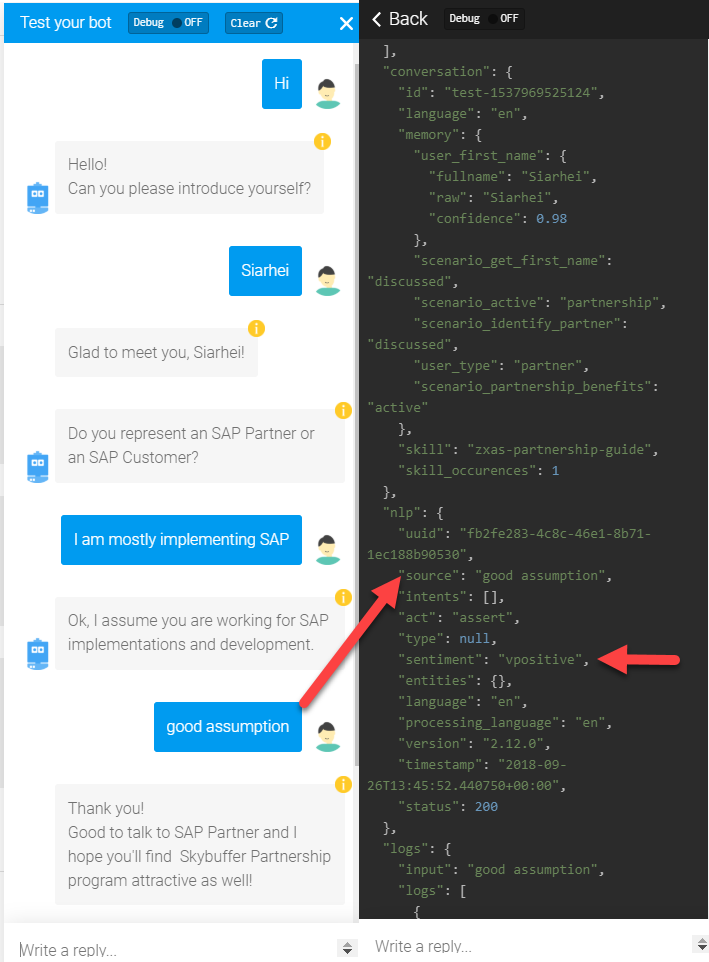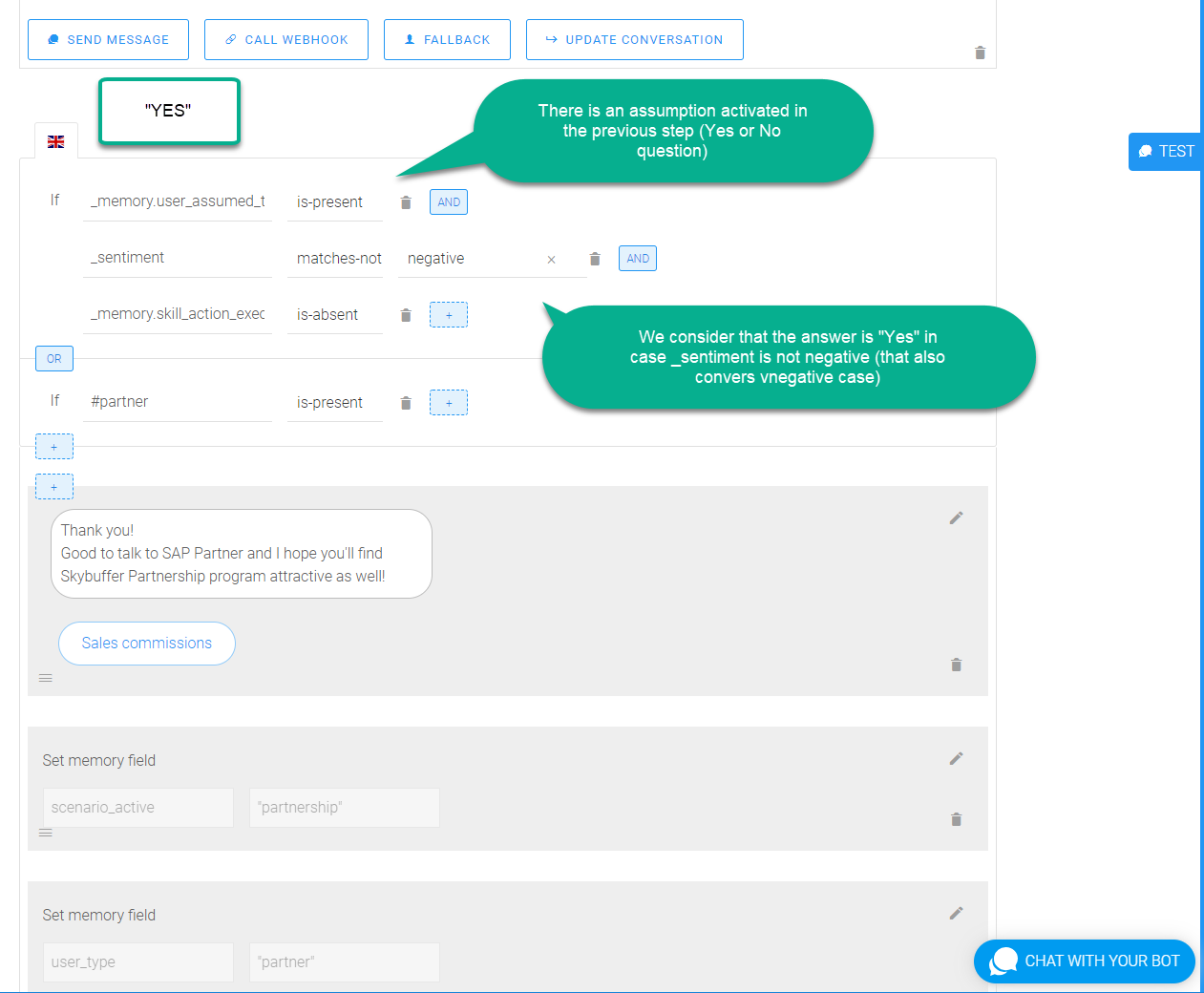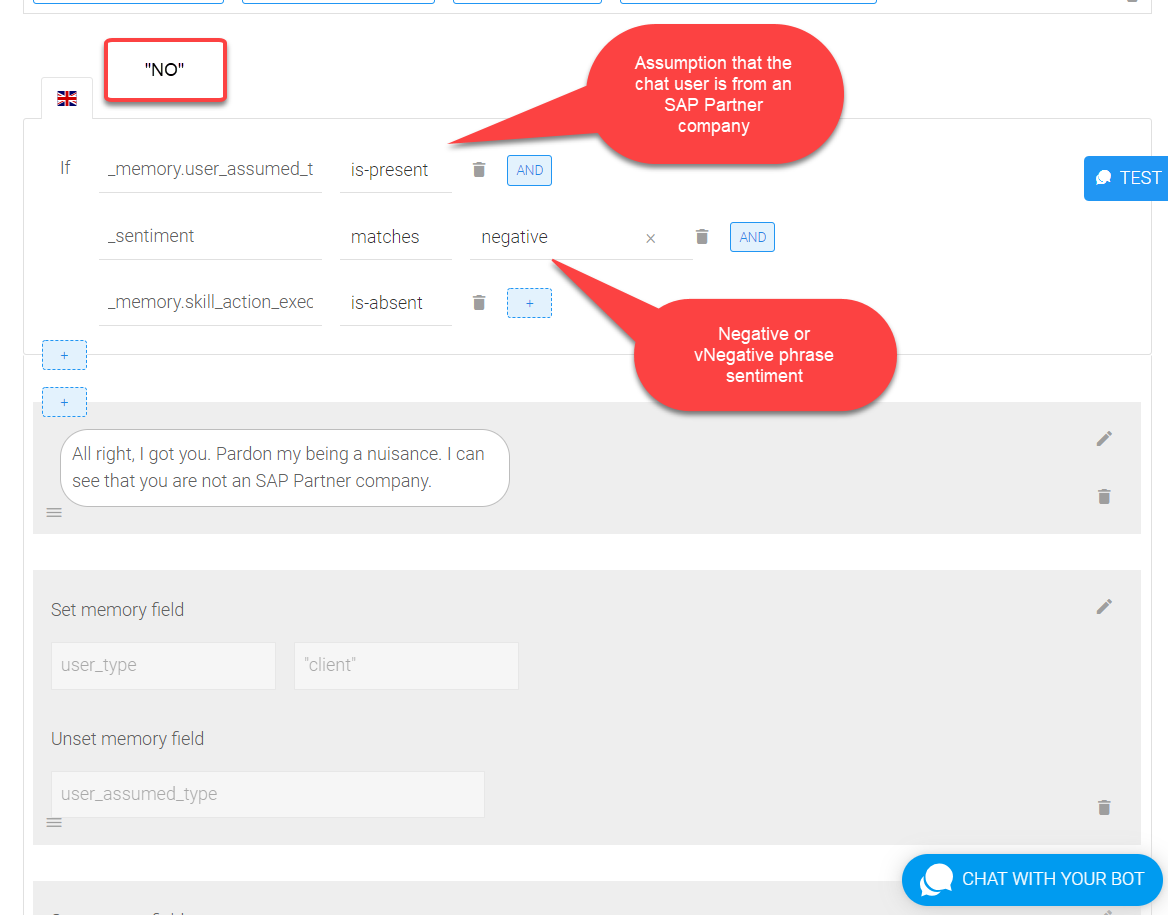The author’s background experience
I have been implementing SAP projects for the last 12 years, working in different countries for different industries and clients’ sizes. For about 5 year I have been a part of SAP Values Prototyping team delivering rapid prototypes and proof-of-concept all over the globe. Currently, I am leading the SAP Practice and SAP Innovations at Skybuffer.
Introduction
We are integrating recast.ai platform into our SAP certified add-on to make it possible to utilize conversational AI functionality as a part of simplified communication with SAP ECC and SAP S/4HANA interfaces.
This article shows how you can base chat bot skills development on _sentiment analysis to understand chat users answers to Yes or No questions.
Prerequisites
You are developing a chat bot and are given the limitation of, let’s say, SAP Fiori chat bot usage. In this case it is not possible or, rather, technically challenging to use Quick replies or Buttons.
Business case
You have a case when the chat bot needs to capture Yes or No kind of answer from the chat user.
For sure, chat users might provide you with a variety of possible positive or negative answers that is quite complicated to capture into the kind of “gap free” intent.
Steps to fulfil requirements
Avoid intent: yes, the purpose is to avoid intents and use _sentiment
NLP characteristic: sentiment
Skill (sample):
- create skill zxas-identify-partner-trigger
Step #1: Create skill with some triggers that asks Yes or No question

In the skill it is possible to define either some intent or _memory based triggers.
In Actions sections there could be questions to the chat users assuming that the chat user either agrees or disagrees:

Step #2: Analyze _sentiment NLP parameter in the log to find out whether it could be used to decide about the chat user answer
We can user “Test” or “Chat with your bot” functionality to analyze NLP results, in my case I will answer Yes or No questions and will capture _sentiment analysis here, using “Chat with you bot” option:

So, you can see that there is no intent here and my chat bot got it right that the chat user is highly likely to be from an SAP Partner company.
Step #3: That is how Actions conditions section can be modeled
On the image below, you can see that we have an assumption in _memory object to “keep in mind” that we are waiting for the answer, and the assumption object that is saved in the memory of the conversation together with a not negative NLP sentiment value will give us a “Yes” answer.

And this is a “NO” answer case conditions:

Conclusion
This is quite a simple example of how to get “Yes” or “No” answer to the question using _sentiment analysis in case when Quick notes or Buttons usage is not possible.